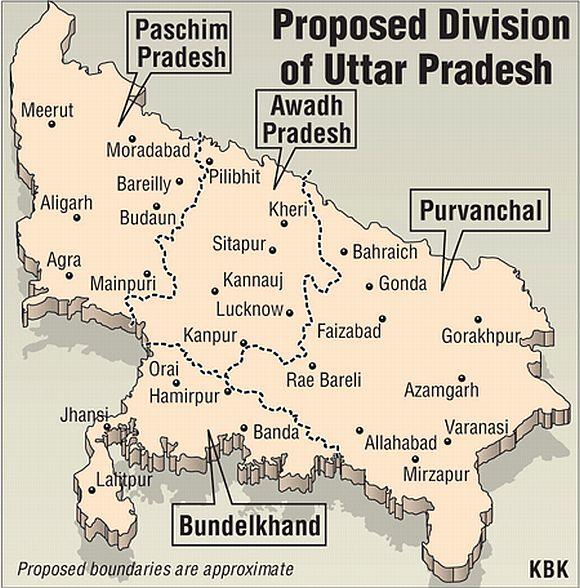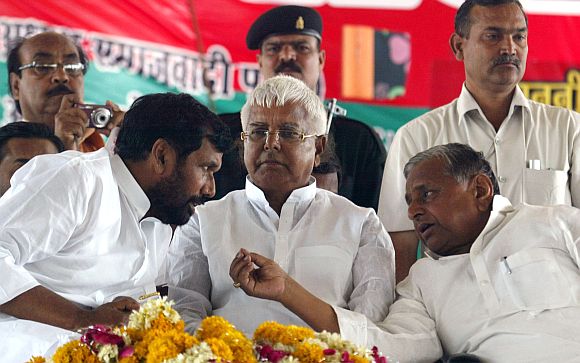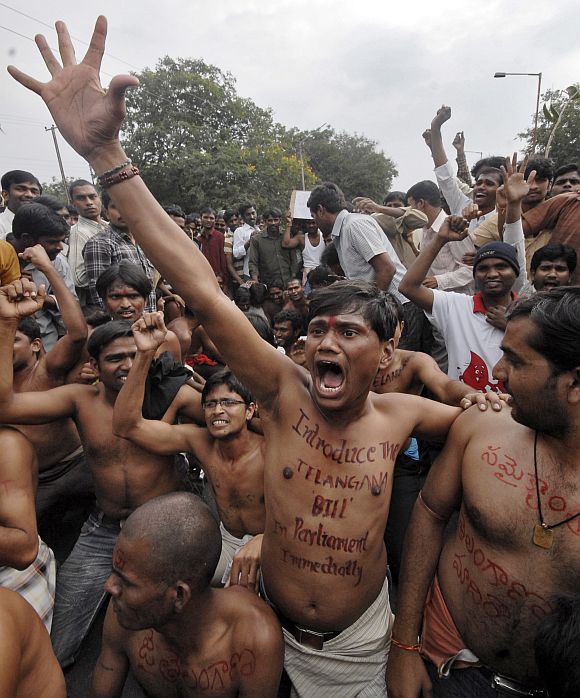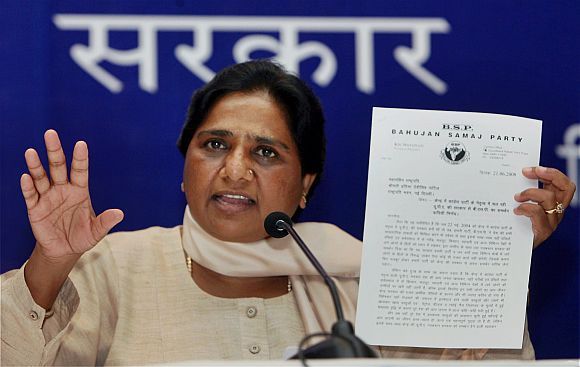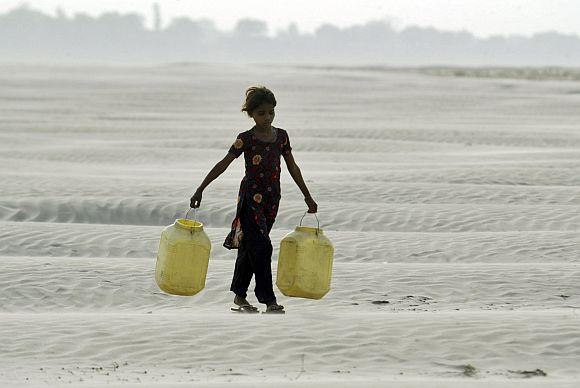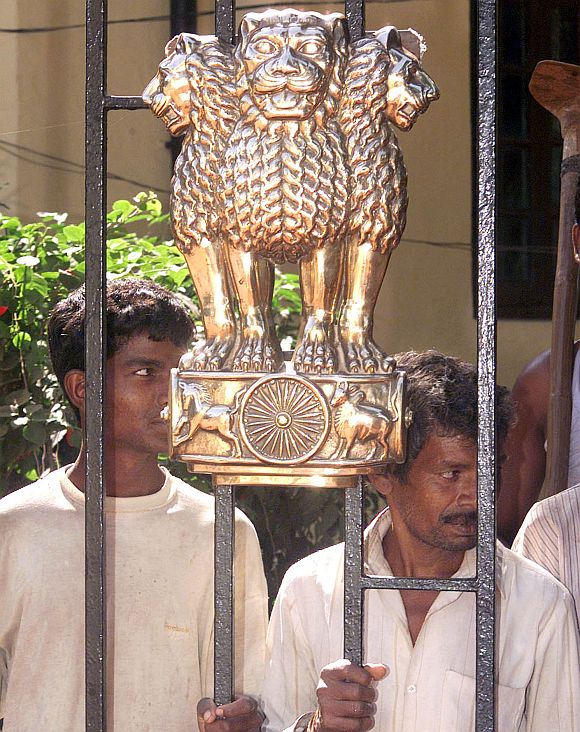 | « Back to article | Print this article |
Two VIEWS: Does India need smaller states?
The new social and political order calls for a reorganisation; but it is no guarantee for effective administration. We present a debate where two experts have put forth their views.
It is time for a second states reorganisation commission that can redraw India's federal map, creating many smaller states and keeping in mind economic viability, feels Professor Sudha Pai.
The current demand for the break-up of large states like Andhra Pradesh, Maharashtra and Uttar Pradesh needs to be examined seriously and dispassionately in its historical and contemporary context.
After Independence, the demand for the reorganisation of states along linguistic lines overshadowed such issues as size and economic capability.
The Congress party had supported the idea of linguistic reorganisation since the 1920s. However, following partition, Jawaharlal Nehru felt that the idea could wait since he feared it would foster local nationalisms, breed parochialism and undermine national unity. So, he argued for large states within a strong political Union and a socialist economy that would enable centralised planning of resources, leading to equitable regional development.
The author is a professor of political science and rector at the Jawaharlal National University, New Delhi.
Please click NEXT to read further...
'States have emerged as important political players'
Further, it was thought that the interchange of capital and labour between the richer and poorer sub-regions in large states would create greater equality over time.
Thus, Nehru mooted the idea of merging Bihar and Bengal and keeping Maharashtra and Gujarat together. Even as these large blocs could not be formed, big states like UP, Madhya Pradesh and AP were created on the basis of language.
B R Ambedkar, on the other hand, held that the doctrine of "one language, many states" would enshrine the principles of language and size: there could be four states carved out of Maharashtra, for example, all of which would speak Marathi but be of a viable size.
Today, the situation has undergone a substantial change. There are increasing demands for carving out smaller states out of the large, single-language states created after independence.
In the contemporary post-Congress and post-reform era, states have emerged as important players determining national political patterns. In many states, an upsurge from below has brought the hitherto underprivileged groups to power, creating new political elites.
And in the era of coalition governments, regional or state parties have become partners in central governance. The establishment of a market economy, too, has opened the floodgates to private capital that has led to increasing regional inequalities and, thus, contributed to the rising demands for smaller states.
'Time to redraw the map, keeping in mind economic viability and people's aspirations'
Economic backwardness of sub-regions within large states has also emerged as an important ground on which demands for smaller states are being made.
This is evident from the immediate demands for the formation of Vidharbha, Bodoland and Saurashtra, among other states.
These developments have been responsible for a shift away from issues of language and culture -- which had shaped the earlier process of reorganisation -- to those of better governance and greater participation, administrative convenience, economic viability and similarity in the developmental needs of sub-regions.
In this situation, the move towards smaller states appears to be inevitable and would lead to more democratisation. The formation of three new states in 2000 -- Jharkhand, Chhattisgarh and Uttarakhand -- has provided a fillip to this process.
It also points to a new confidence in the political elite in comparison to the early years of independence. Today, fears of the Centre weakening due to the creation of a large number of small states are unfounded.
Many small states were created after 1956 -- Punjab, Haryana and some in the north-east -- which strengthened rather than weakened the Union.
Even as the older federal structure served the polity created at independence, there is a need to redraw the map of India in keeping with the new social and political order.
Reorganisation needs to be seen not as a task undertaken at a single point of time, but as an ongoing process that remains unfinished.
At the same time, the creation of a federation consisting of smaller states is a complex task and requires careful attention.
Many critics have correctly argued that the mere creation of smaller states out of the existing bigger ones does not guarantee good governance and faster and inclusive economic development.
Considering the plethora of demands being raised, it is time for a second states reorganisation commission that can redraw India's federal map, creating many smaller states and keeping in mind the twin criteria of economic viability and people's aspirations.
Click NEXT to read the counter-view: 'Politicians envision additional posts of power in smaller states'
'Politicians envision additional posts of power in smaller states'
If the administration in a large state suffers from inefficiencies, what is the guarantee that it will become competent by merely is creating a smaller state, argues Rakesh Hooja.
Why do political demands for smaller states and bifurcation arise? There are, of course, emotional considerations like culture, language, religion and a sense of economic and regional deprivation.
But more importantly, politicians envision additional posts of power as chief ministers or ministers, leaders of the opposition, assembly speakers and so on.
Similarly, government servants think of becoming chief secretaries or secretaries, DGs of police, chief-engineers, directors and so on.
A common notion is that a larger share of central funds would flow into a new state compared to when it is a region in a larger state. Most also believe that a new capital city would provide better living conditions.
The author is director, Indian Institute of Public Administration
'Poor performance of a state is not necessarily linked to size'
Arguments are set forth that a smaller state with less number of districts would diminish the span of control of state-level functionaries. And that reduced distances between the state capital and peripheral areas would improve the quality of governance and administrative responsiveness and accountability.
However, this can easily be achieved with strong regional administrative units in larger states.
Evidence shows that both large and small states have fared well and that poor performance is not necessarily linked to size. In fact, today, technology can help make governing larger territories easier and bring even far-flung areas closer.
Much more than the size of a state, it is the quality of governance and administration, the diverse talent available within the state's population, and the leadership's drive and vision that determine whether a particular state performs better than the others.
A small state is likely to face limitations in terms of the natural (physical) and human resources available to it. Moreover, it will lack the kind of agro-climatic diversity required for economic and developmental activities.
It would also be restricted in its capability to raise resources internally. All these factors would only make it more dependent on the Centre for financial transfers and centrally-sponsored schemes.
'A new small state may find itself lacking in infrastructure'
Further, increasing the number of states in the country would expand the span of control of the central ministries dealing with states and of party high commands dealing with state party units.
A new small state may find itself lacking in infrastructure (administrative and industrial), which requires time, money and effort to build.
Some may argue that it is with this very purpose of developing infrastructure that demands for the creation of smaller states are encouraged. But experience shows that it takes about a decade for a new state and its government and administrative institutions to become stab#8804 for various issues of division of assets, funds and of the state civil service(s) to get fully resolved; and for links to the new state capital to stabilise.
The cost of this transition is not low and the state's performance may suffer during this interim period.
So, the rationalisation of some existing state boundaries and reorganising territories may be desirable for reasons of physical connectivity. And even as this and other socio-political factors could be considered by a new state's reorganisation commission, a change merely for the sake of having a small state is not desirable.
Moreover, we cannot fix a state's optimum size on a whim. It calls for a thorough evaluation of physical features like land quality and topography, agro-climatic conditions, socio-cultural factors, natural and human resource availability, density of population, means of communication, existing administrative culture and effectiveness of its district and regional administrative units and so on.
There are numerous demands for smaller states in different parts of the country. However, smaller states are not a panacea for India's myriad problems.
Neither can they resolve issues faced by various regions and sections of society. Larger states may be, in fact, more economically -- and financially -- viable and better capable of serving people and achieving planned development.
If the administration in a large state suffers from inefficiencies, what is the guarantee that it will become competent by merely creating a smaller state?
